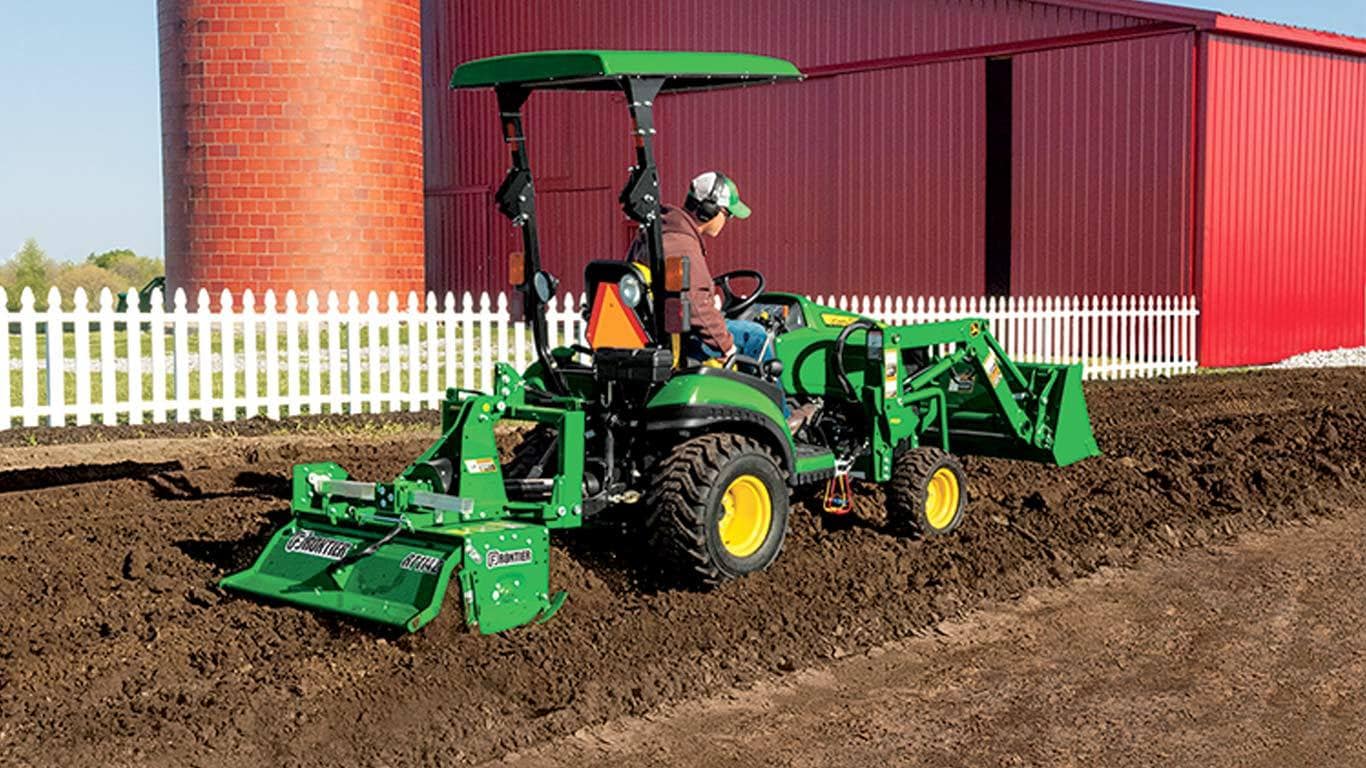How Do Rotary Tillers Work?
Rotary tillers utilize sets of curved tines with a rotating shaft to dig into the soil, ensuring it is fine and clod-free so that planting goes off without a hitch. Whether landowners are replanting their garden from last year or are preparing to put in a new one, this attachment is perfect for getting the ideal soil texture for planting.
What to Consider Before Using a Rotary Tiller
To ensure they are achieving the desired result from their rotary tiller, here are some things that operators should consider before jumping in head-first with a rotary tiller.
Working Depth
Operators can increase or decrease the working depth of their rotary tiller by adjusting the skid shoes – it should be noted that larger tillers typically come with a deeper maximum cutting depth. When using this piece of equipment in a large vegetable garden, operators should avoid cutting any deeper than 6 inches down.
Working Width
When looking to implement a rotary tiller, operators must take care to consider the width of their tractor’s rear tires – the tiller should be at least as wide as the rear tractor tire base or else some parts of the garden may be left un-tilled. Additionally, when tilling the garden, operators should be sure to overlap with each pass.
Utilizing a Rotary Tiller in a New Garden
When forming a new garden, operators should consider plowing the soil for the first time in the fall and letting it sit through the winter. Then, in the spring, the rotary tiller should be used to turn the soil about 4 to 6 inches deep – this will ensure that there are no large soil clods left behind. During this process, operators should start slowly and avoid digging too deep into the soil as tilling too fast will likely leave portions of the soil un-tilled.
For more information regarding John Deere lawn and garden equipment, as well as used rotary tillers contact your local John Deere dealer.
Additional Resources:

